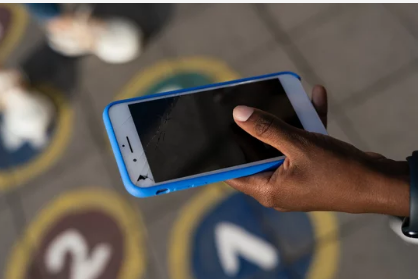Data sharing between smartphones has become a necessity in our digital lives. Whether you’re sending a photo to a friend, transferring documents for work, or moving all your files to a new device, choosing the right method can save time and frustration. For iPhone (iOS) and Samsung or other Android devices, the three most common approaches are Bluetooth, Wi-Fi-based sharing, and cloud storage.
But which option works best? Let’s break down each method, compare their strengths and weaknesses, and help you decide which one is right for your needs.
1. Bluetooth: The Oldest Method
Bluetooth has been around for decades and remains a default feature on almost every smartphone.
How It Works
Bluetooth pairs two devices wirelessly and allows for the transfer of small files, such as contacts, images, or audio clips.
Pros of Bluetooth Sharing
- Universally supported on both iOS and Android.
- Works offline—no internet needed.
- Simple to set up.
Cons of Bluetooth Sharing
- Very slow compared to modern methods.
- Limited file size (large videos or apps are impractical).
- iOS restricts direct Bluetooth file transfers outside Apple’s ecosystem, making it unusable for sharing with most Android devices.
Best For:
Small, occasional file transfers between older devices or when no internet is available.
2. Wi-Fi-Based Sharing: Fast and Versatile
Modern smartphones often use Wi-Fi Direct, AirDrop, or Nearby Share to transfer files quickly without cables.
iOS (AirDrop)
AirDrop is Apple’s flagship file-sharing tool. It uses both Wi-Fi and Bluetooth to connect devices instantly.
- Pros: Lightning-fast, no internet required, keeps file quality intact.
- Cons: Limited to Apple devices only.
Android (Nearby Share / Quick Share)
Samsung devices feature Quick Share, while Android in general supports Nearby Share. Both function like AirDrop, allowing users to transfer photos, videos, and documents seamlessly.
- Pros: Fast, works offline, supports large files.
- Cons: Works only with Android devices—no iPhone support.
Cross-Platform Wi-Fi Sharing Apps
Since AirDrop and Nearby Share don’t talk to each other, third-party apps like Send Anywhere, SHAREit, Xender, or Zapya fill the gap. They use Wi-Fi Direct or QR codes for fast transfers between iOS and Android.
- Pros: Works across both iPhone and Samsung.
- Cons: Requires app installation on both devices.
Best For:
Fast transfers of large files between modern smartphones—especially when both devices are on the same platform (Apple-to-Apple or Android-to-Android).
3. Cloud Storage: Convenient and Cross-Platform
Cloud services have transformed how we share and store data. iCloud (Apple), Google Drive, Dropbox, and OneDrive are some of the most popular options.
How It Works
- Upload files from one device to the cloud.
- Access and download them from another device, anywhere in the world.
Pros of Cloud Sharing
- Works across iPhone, Samsung, and any internet-enabled device.
- Easy access to files anytime, anywhere.
- Ideal for backups and syncing.
Cons of Cloud Sharing
- Requires stable internet (Wi-Fi or mobile data).
- Free storage is limited (iCloud 5GB, Google Drive 15GB).
- Uploading and downloading large files can be slow if the connection is weak.
Best For:
Cross-platform sharing, backups, and long-term file access. Perfect for users who switch between iOS and Android devices.
Feature Comparison: Bluetooth vs. Wi-Fi vs. Cloud
| Feature | Bluetooth | Wi-Fi (AirDrop/Nearby Share/Apps) | Cloud (Google Drive, iCloud, etc.) |
|---|---|---|---|
| Speed | Slow | Very fast | Moderate (depends on internet speed) |
| Cross-Platform | Limited (iOS restrictions) | Yes (with third-party apps) | Yes (universal access) |
| File Size Handling | Small files only | Large files supported | Large files supported, storage-limited |
| Internet Required | No | No (offline Wi-Fi Direct supported) | Yes (upload/download needed) |
| Ease of Use | Simple | Simple for same-OS, moderate with apps | Very simple once set up |
Which Method Should You Choose?
- For small, quick transfers offline: Bluetooth is still a backup option, but it’s outdated.
- For speed and quality: Wi-Fi sharing (AirDrop, Nearby Share, or apps like Send Anywhere) is the best choice.
- For universal access and backups: Cloud storage services like Google Drive or iCloud are unbeatable.
Final Thoughts
There’s no single “best” method—it depends on your situation:
- iPhone-to-iPhone: AirDrop is king.
- Samsung-to-Samsung or Android-to-Android: Nearby Share or Quick Share wins.
- iPhone-to-Samsung (cross-platform): Cloud storage or Wi-Fi-based apps like Send Anywhere are most effective.
By understanding the pros and cons of Bluetooth, Wi-Fi sharing, and cloud storage, you can pick the method that saves you the most time and keeps your files safe.
Also Read :
